When you make home canned soups you end up with a meal in a jar instead of ingredients to make a meal. Canning soup at home helps you be better prepared for emergencies and for busy weeknight dinners.

A friend recently told me that someone told her, “You can only can soups at home using recipes that were tested in a lab. You can’t can your own soup recipes.”
That’s not exactly true.
There are guidelines that the USDA publishes for how to safely can soup at home. They would not publish those guidelines if it wasn’t safe to can untested soup recipes.
Let’s explore those guidelines.
Soups must be canned in a pressure canner
Yes, you absolutely have to use a pressure canner to can homemade soups. Meat, legumes and vegetables are low acid foods and there is no way to add enough acid to make them safe for water bath canning.
Honestly, it doesn’t really matter what yours or my Grandmothers used to do – or what we *think* they did – when canning soups. If they just boiled jars of soup in a water bath canner for 4 hours and no one got sick or died…they were just lucky.
In our day and time, with so much good information at our fingertips, there really isn’t any reason to not follow these safety recommendations.
If you don’t have a pressure canner, you can always freeze the soup instead of canning it. If you freeze it in ziplock bags, you’ll be able to stack them in the freezer and take up very little space.
I have the All Amercian Pressure canner and love it. It’s the one I recommend. But it can be pricey. There other high quality less expensive canners on the market. If you save a few dollars each week from your grocery budget, you’ll be able to get a pressure canner in 5-6 weeks.
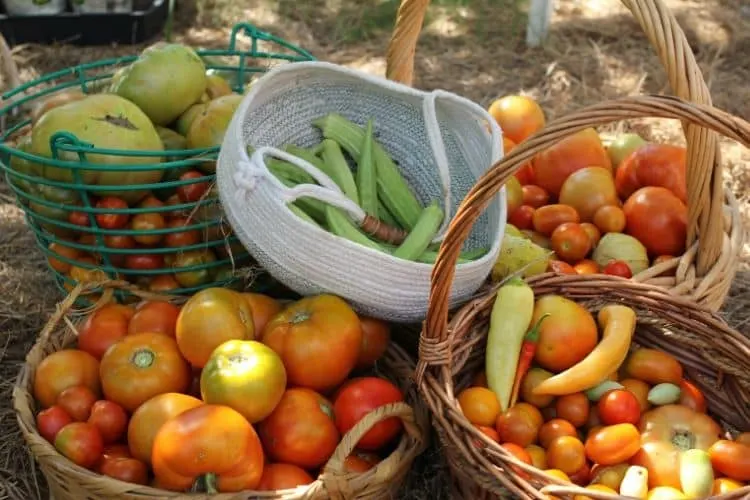
Only use recommended vegetables and meats
If a vegetable or meat has safe canning instructions (for the pressure canner, not pickling) it is safe to use in your soup mix. That means if a vegetable is not safe to can on it’s own in the pressure canner, it cannot be added to the soup mixture.
So, vegetables like cabbage and summer squash can’t be used in home canned soups.
One way I get around this is to dehydrate summer squash and add it to the soup when I’m heating it up to serve. You can do the same with cabbage.
Use dried herbs to season
One of the freedoms that knowing canning rules gives you is the freedom to experiment. Dried herbs are safe to use in any canning project.
Some of our favorite dried herbs for canning soups are oregano, thyme, cayenne, chili powder, garlic, onion, and, of course, salt and pepper.
The thing you want to remember is that you can always add more seasonings when you serve the soup, but you can’t add less. It’s okay if the finished soup is a little bland, you can just doctor it up when you heat it.
One herb to avoid when canning is sage. It’s commonly thought that sage will get bitter when canned. Some people say this doesn’t happen, but reputable sources say otherwise. Obviously, you can add it or not, but now you know what could happen.
No pasta, rice, dairy or thickeners in the soup
While commercial canners can include things like pasta, rice, dairy and thickeners in their canned soups, home canners cannot. We don’t have the right equipment to do it safely.
If I have a recipe that I usually add noodles or rice to – like chicken soup – then I can that recipe and just leave out the noodles and rice. When it comes time to serve the soup, I’ll cook up some noodles or rice and add it to the soup just before serving.
If I have a recipe that uses dairy or needs thickening, I leave that out when I can the soup. When I heat it up to serve, I’ll add a thickening agent and the dairy.
No pureed soups
Pressure canning works because the high heat is able to penetrate to the interior of the jar and kill any bacteria that might be hanging out in there. But if the soup is pureed and thick, the heat can’t penetrate.
This is the same reason it’s unsafe to can pumpkin butter or pumpkin puree. So, no canned squash soup or potato soup that’s been pureed. You can use winter squash chunks and potato chunks to can a soup base that you would puree when you serve it. I have several of these recipes in my book, The Ultimate Guide to Preserving Vegetables.
There are a couple of exceptions to this no pureed soup rule, and tomato soup is one of them. There are tested recipes that you can use as a starting point for tomato soup. In the Ball Blue Book of Preserving there is a spiced tomato soup recipe.
In the same book, is a Carrot and Fennel pureed soup recipe. I used this tested recipe to create a Ginger Carrot soup (the recipe is in my book). I was careful to not alter the ratio of liquid to solids so the soup is just as think (or in this case thin) as the original recipe.
But as a general rule, no pureed vegetables for canning soup.
Dry beans and peas must be cooked
It’s so tempting to think, ” The pressure canner will cook the beans. So I’ll just add them raw to the soup.” But don’t.
Those beans will absorb all the liquid and you’ll be left with a jar of thick “soup” with no liquid. Who knows if the heat was able to penetrate the interior?
Dried beans and peas will need to be completely rehydrated before adding to soup, just like you do when you’re canning dry beans.
If dried beans or peas are used, they must first be fully rehydrated (for each cup of dried beans or peas add 3 cups of water, boil 2 minutes, remove from heat, soak 1 hour, heat to boiling, drain). “
National Center for Home Food Preservation
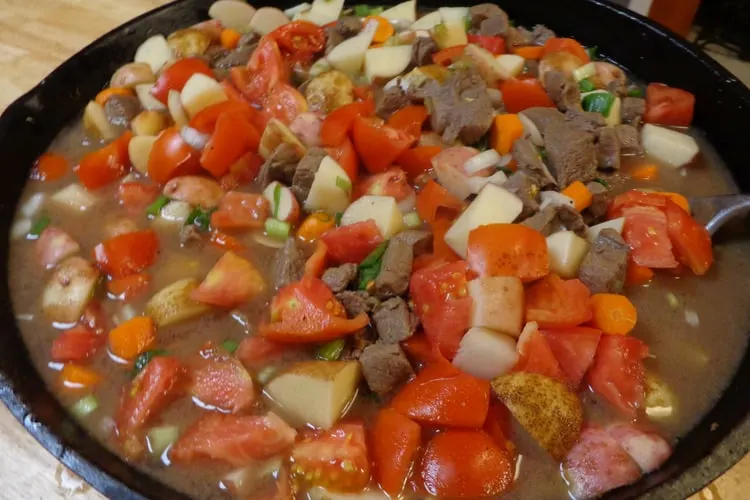
Meat must be cooked
I love using the raw pack method when I can meat, but it cannot be used when canning soups.
Meats must be cooked until tender before adding them to the soup mixture. If the meat is on bones, it needs to be deboned.
Don’t fully cook the soup mixture
Once you have all the ingredients prepared, combine them in a large stock pot with hot water, broth or tomatoes. You want your soup to be “soupy”.
Bring to a boil and boil for 5 minutes. Then it’s ready to be put in jars.
Put the solids in first
You need to wash the jars and lids before filling them. It’s not necessary to sterilize the jars, but they do need to be hot.
When filling the jars its important to make sure that the solids are evenly divided among the jars. You don’t want one jar filled to the shoulder will solids and another jar that is all liquid. This is a safety and quality issue.
Home canned soups need to have room to move around and not be thick. Therefore, it’s recommended that you only fill the the jar halfway with solids and the rest with liquid.
This liquid should be the soup broth you cooked the solids in. But if you come up short, you can add hot water, tomato broth, or other broth to make up the difference.
For pressure canning soups, you will need to have a 1″ headspace.
Processing the soup in a pressure canner
Prepare the pressure canner according to the manufacturer’s instructions.
One you’ve make the soup mix and filled the jars leaving a 1″ headspace, you’ll need to wipe the rims of the jars and add the lids and bands.
Put the jars into the pressure canner and process at 10psi adjusting for altitude if needed.
According to the National Center for Home Food Preservation, if you’ve followed all these rules, then you can process the soup for 60 minutes for pints and 75 minutes for quarts. However, if there is seafood in the mix, it must be processed for 100 minutes.
According to the 2014 edition of the Ball Blue Book Guide to Preserving “The length of processing time for combination recipes must safely preserve the ingredient requiring the longest processing time. Follow individual recipe for ingredient preparation, jar size, and processing time.”
I don’t know why there is a discrepancy between the NCHFP and Ball. I was taught the Ball way and since it ends up being a longer processing time for all the soups I can, that’s what I follow.
Home Canned Soup Recipes
Having home canned soups on hand is a fantastic way to get dinner on the table quickly.
Canned Beef Stew
Canning beef stew in the summer is a fantastic way to preserve the summer vegetables and have shelf stable meals available year round. This is a tomato based beef stew that makes for a wonderful canned stew. You can pretty much use whatever vegetables you like in beef stew to suit your family's taste preferences.
Canned Sausage, Potato and Kale Soup
Canned sausage, potato and kale soup is delicious, shelf stable soup that will make your weeknight meals a snap.

The Ultimate Guide to Preserving Vegetables: Canning, Pickling, Fermenting, Dehydrating and Freezing Your Favorite Fresh Produce
This vegetable preserving book has several soups recipes for canning and several soup recipes for freezing.
Homemade Chicken Soup: Safe Recipe for Home Canning
Chicken soup is a classic but versatile soup. Learn how to safely can chicken soup for a quick meal starter.
Canning Corned Beef with Potatoes
Canning corned beef creates not only a shelf stable item, but an instant, healthier fast food option. Seasoned brisket purchased from your local market or a home cured one will give you a satisfying dish. By adding potatoes you’ve created a filling meal in a jar.
How To Can Chicken Stock
Chicken stock is a must have pantry essential for many recipes, including soups, stews, gravies, and stir-fry. Skip the store bought cartons and make and can chicken stock instead.
Split Pea and Ham Soup (and how to can it)
Make this filling, delicious Split Pea and Ham Soup on a cold day to warm you up! Recipe also includes tutorial for canning this soup for long term storage!
How to Host a Soup Swap
Instead of a cookie swap, I decided to host a soup swap. This is a great way to get together with friends and get some tasty meals at the same time.
Homemade Canned Tomato Soup Recipe (Video)
Skip the store-bought soup from a tin and make this flavorful Homemade Canned Tomato Soup with a few simple ingredients from the garden.
Canning Ham and Bean Soup
Spend a morning canning ham and bean soup and have jars of ready made meals quickly at hand.
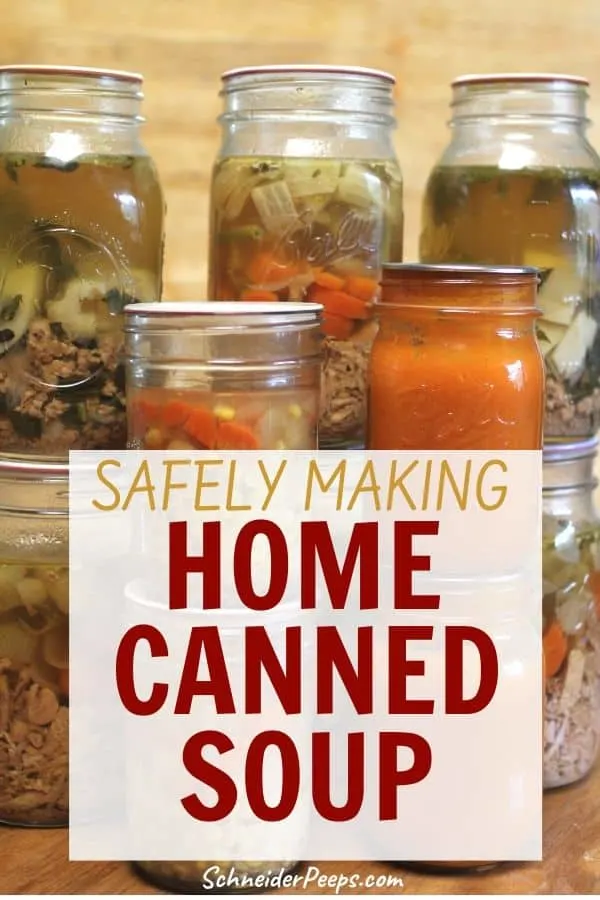

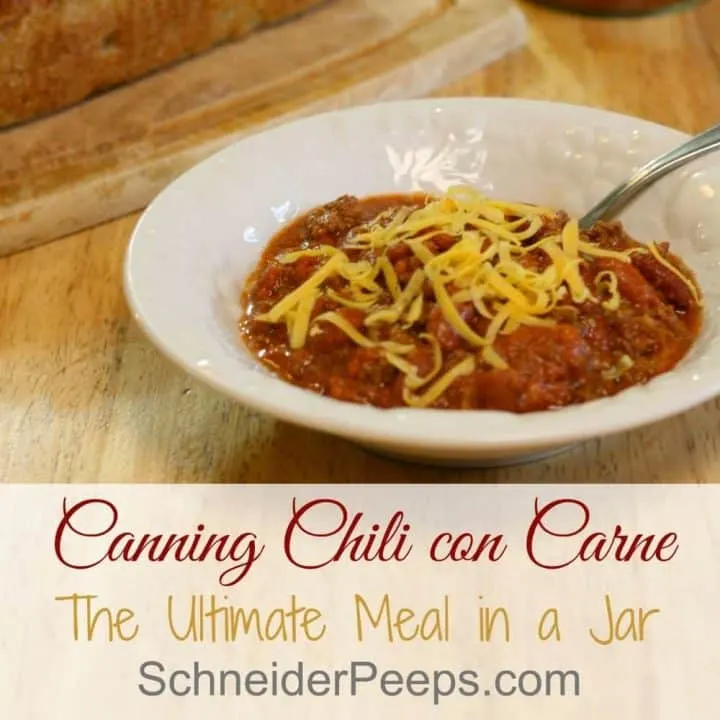
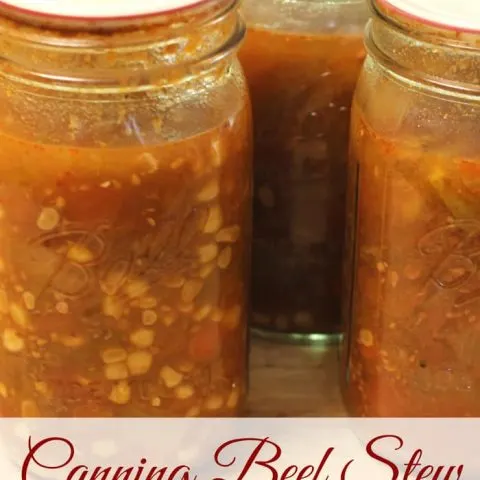
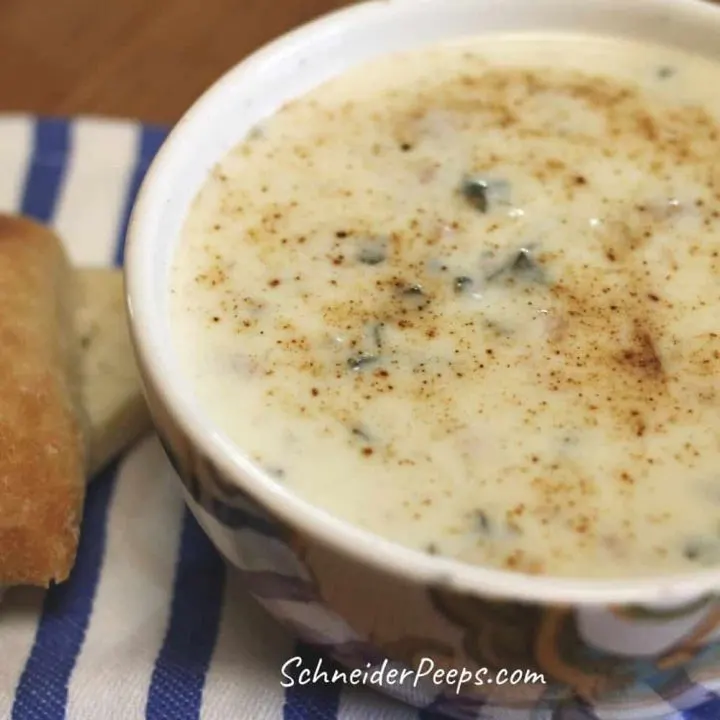
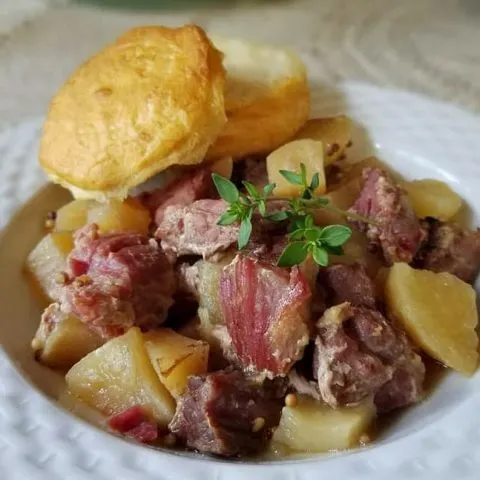
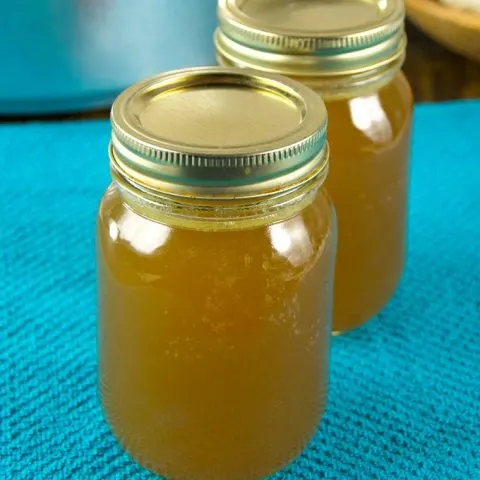
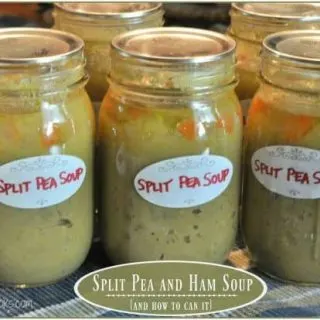
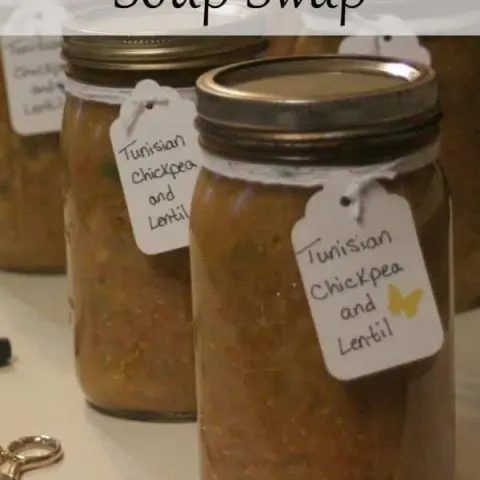
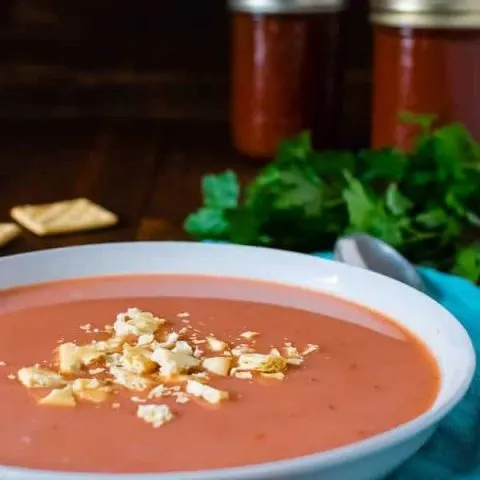
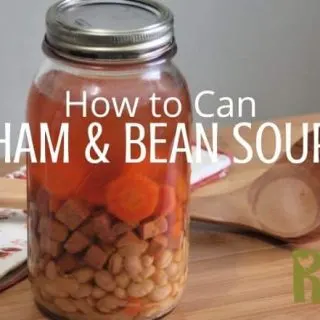
Georgia Gunn
Wednesday 22nd of September 2021
You can add cabbage and summer squash to soups. They are vegetables that can be canned. I have canned them for years both in soups and individually. The squash gets mushy but flavor is good. I used it in different casseroles.
Angi Schneider
Friday 24th of September 2021
Hi Georgia, I know that some people do add cabbage and summer squash to home canned soups, however, according to the USDA guidelines for canning your own soup mixes it's not considered safe. This article is an explanation of those guidelines.
jo murphey
Sunday 28th of June 2020
Angi, Even though the powers that be say you can't can squashes and cabbage. I do it every year. It's one of those things that you do at your own risk. While I don't can pureed soups, I do can all the ingredients together to make pureed soup and hit it with my immersion blender when I heat it.